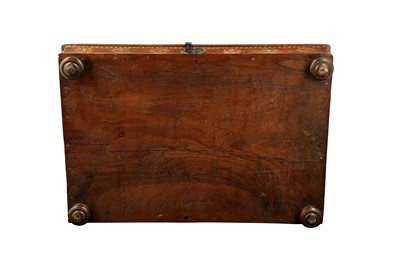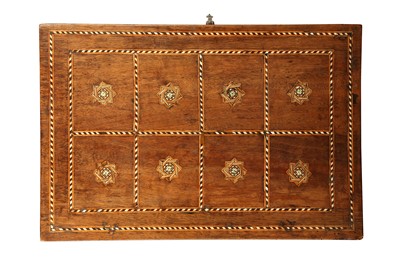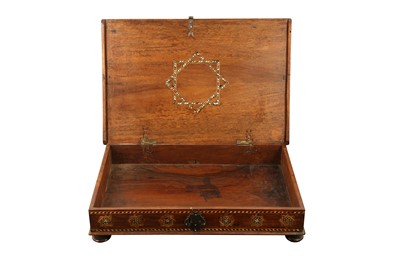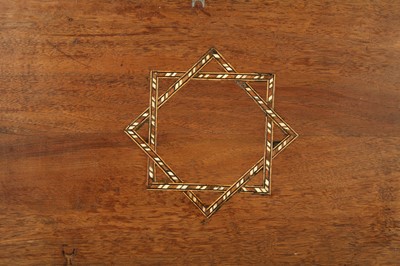29th Oct, 2021 14:00
Islamic & Indian Art
λ AN HISPANO-MORESQUE IVORY, STAINED WOOD AND BONE-INLAID PORTABLE DOCUMENT HOLDER
Possibly Granada, Nasrid Spain, 15th century
λ AN HISPANO-MORESQUE IVORY, STAINED WOOD AND BONE-INLAID PORTABLE DOCUMENT HOLDER
Possibly Granada, Nasrid Spain, 15th century
Of typical narrow rectangular shape, resting on four compressed rounded wooden feet, with a hinged lid, the exterior clad in fine marquetry work arranged in symmetrical order in the typical style of Islamic Spain with taracea granadina, comprising tesserae of bone, ivory, stained ivory, and coloured wood inlaid in a geometric eight-pointed star pattern framed within narrow two-tone fretwork bands, the interior plain except for a geometric eight-pointed star inlaid on the back of the lid, the steel lock plate and the brass hinges later replacements, 8.5cm x 40cm x 27cm.
The Spanish word taracea (marquetry), deriving from the Arabic word tarsi (to insert, inlay), describes a technique that consists of inlaying pieces of wood, bone or mother-of-pearl into a piece of hardwood, such as walnut. Material evidence confirms that this technique of Eastern origin was widely in use in Islamic Cordoba since at least the 10th century. But it wasn't until the Nasrid period (1232 - 1492) that it reached its full potential. Indeed, under the Nasrids, the technique was simplified and the elaborate geometrically-cut inlays were stuck onto a base of paper or parchment first, and subsequently stuck onto the main piece of furniture (Margarita Sánchez Llorente "Writing desk" in Discover Islamic Art, Museum With No Frontiers, 2021. http://islamicart.museumwnf.org/database_item.php?id=object;ISL;es;Mus01;25;en, last accessed 30/09/2021).
The basic motif usually encountered on pieces of furniture produced in Nasrid Granada is the eight-pointed star (taracea granadina), which entered the architectural repertoire of Nasrid buildings, like the Mezquita and Madina Azahara, from pre-Islamic mosaics (Maria Paz Aguilo Alonso, El Mueble en Espana: Siglos XVI - XVII, 1993, p. 164). In the mudejar furniture productions of the 16th and 17th centuries, the designs tend to abandon the crisp geometric quality of 15th-century examples in favour of more elaborate, intricate and multi-layered patterns. For comparable Nasrid chests and pieces of furniture, please see Christie's London, 17 April 2007, lot 62; and in the National Archaeological Museum, Madrid (Leopoldo Torres Balbas, Ars Hispaniae, Arte Almohade, Arte Nazari, Arte Mudejar, Madrid, 1949, fig. 243, p. 222) and Museum acc. no. 1972/105/3.
This item may require Export or CITES licences in order to leave the UK or the European Union. It is the buyer's responsibility to ensure that lots have the relevant licences before shipping.
Do you have an item similar to the item above? If so please click the link below to submit a free online valuation request through our website.







